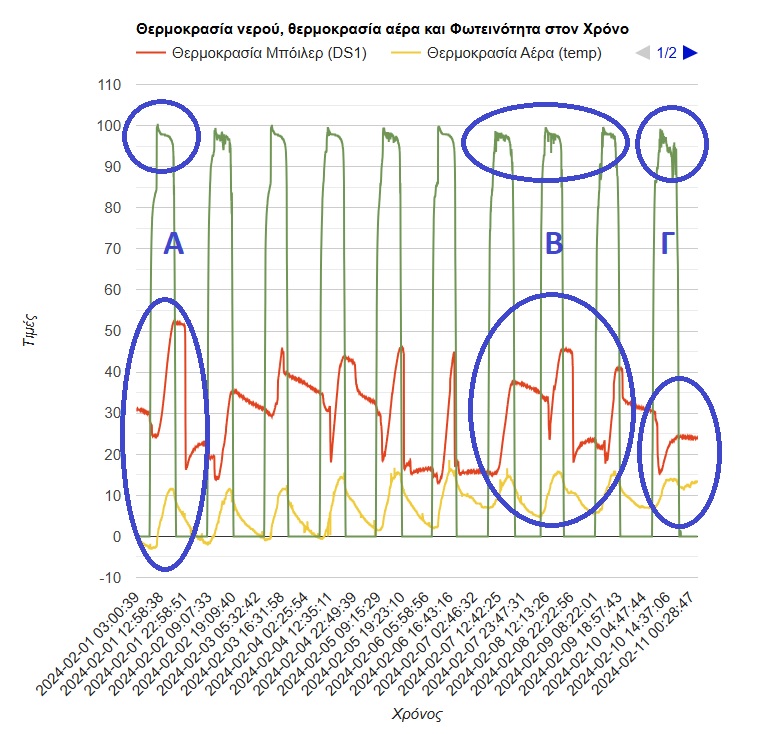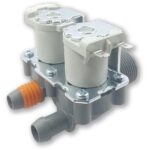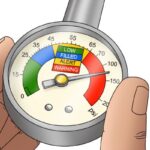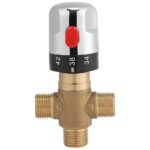Performance of Solar Water Heaters in Winter

Characteristic examples of solar water heater performance during winter. The graph shows data from the first ten days of February 2024.
Contents
Theory
The operation of solar water heaters in winter is a common question, as many people are concerned whether reduced sunshine will affect their performance. Solar water heaters operate normally in winter, but their efficiency is lower compared to summer, when the amount of sunlight is greater.
During the winter months, the water may not reach the same temperature as in summer, but it is still heated enough for daily use. This is because, even with cloud cover, the sun still emits radiation that is absorbed by the collectors. Modern solar water heaters have backup options, such as electric resistance elements or connection to central heating systems, to ensure a continuous supply of hot water even when sunlight is limited.
In summary, solar water heaters can operate year-round, but for days with reduced sunshine, backups are necessary to meet hot water and heating needs.
To demonstrate the year-round and especially winter performance of a solar water heater, the live monitoring project of solar tank temperature was created. You can check the current water temperature in the tank (DHW), the air temperature—which plays a critical role in system performance and water heating in the collectors (apart from solar radiation)—and the brightness based on an LDR sensor. In addition to real-time values, graphs with historical data since the beginning of the logger’s operation are available.
Graph Commentary
In Case A we have a day when the ambient temperature was negative (-3.2°C), but there was strong, uninterrupted sunlight throughout the day, resulting in a remarkable increase in water temperature from 24.38°C to 52.19°C. On a February morning starting below zero, the water “gained” about 28 degrees. This confirms that in winter, solar water heaters actually perform very well, and on days with strong sunlight, their performance approaches that of summer—even though the ambient temperature was much lower, with a maximum of just 11.5°C. Additionally, at this time of year, the sun’s rays are almost vertical to the collectors.
In Case B we have a set of three days showing a notable rise in water temperature (by about 20-22°C) with higher ambient temperatures. On these days, daytime temperatures ranged from 7°C to 14°C. However, the system’s performance was lower, which can be explained by the presence of clouds. The LDR sensor graph confirms these were unstable days in terms of cloud cover. In summary, solar water heaters perform in winter even on partly cloudy days.
In Case C we have a day with heavy cloud cover in early February 2024. Right in the middle of winter, on a cloudy day, the system still increased the water temperature by 9°C—reaching 24°C from 15°C! While this may not be enough for a hot bath, 160 liters at 24°C are still very useful for washing dishes or other hot water uses, such as supplying hot water to washing machines from the solar water heater. Read this article for more information on this topic.
- Improvements in the Placement of the Data Logger - 29 January 2025
- Solar Water Heater Statistics – December 2024 - 10 January 2025
- Washing machines with dual water supply - 24 December 2024











